For quite some time now, I’ve seen writers, bloggers, and journalists alike arguing about the best platform to start writing nowadays. Is it Substack.com, or is it Medium.com? And if one is better than the other, why?
- Learning more about the two platforms
- What are the differences between Medium.com and Substack.com?
- How do Medium and Substack pay writers?
- Looking at both publishing platforms from a reader’s perspective
- Should you avoid Medium and Substack and focus on self-hosting options?
- Conclusion: Which platform should you use as a writer?
At first glance, both platforms seem identical, like they’re designed for the same reasons. And although that’s true on a scale, both are very different from each other. If you’re looking to start blogging in 2025 but wondering which publishing platform to choose, this article is based on my personal experience and lots of feedback that I got from publishers on both sides.
Learning more about the two platforms
First and foremost, a little backstory for each platform that may help you decide more easily. Knowing who created each one and why is important, as you’re gonna be using it to publish your stories and potentially make money from writing.
Comparison between the two platforms
| Feature | Medium | Substack |
|---|---|---|
| Primary Purpose: | Blogging platform with a built-in audience and discovery features. | Email newsletter platform focused on direct audience relationships. |
| Monetization: | Writers can earn through the Medium Partner Program (based on member reading time). | Writers can charge for subscriptions and keep most of the revenue. |
| Revenue Model: | Medium takes a share of subscription revenue ($5/month or $50/year for readers). | Substack takes a 10% cut of paid subscriptions + Stripe’s payment processing fees. |
| Audience Discovery: | Strong discovery via Medium’s algorithm, tags, and curation. Articles can go viral. | No built-in discovery; writers must build their own audience through emails and promotions. |
| Ownership & Control: | Medium controls distribution, and its algorithm determines visibility. | Writers own their email list and have full control over distribution. |
| SEO & Traffic: | Medium ranks well on Google but doesn’t allow custom domains (your articles stay on Medium.com). | Writers can use their own domain, which helps build independent SEO value. |
| Subscription Management: | Readers pay Medium for a subscription, which gives them access to all Medium content. | Writers set their own subscription prices and directly monetize their audience. |
| Content Format: | Long-form articles and blog posts. | Email newsletters, but also supports long-form posts on a website. |
| Community & Interaction: | Users can comment, highlight, and follow writers within the platform. | Readers can reply to emails and leave comments on posts, but there’s no built-in algorithmic promotion. |
| Ease of Use: | Simple to publish with built-in formatting and publishing tools. | Easy to set up, but requires external promotion to grow. |
| Best For: | Writers who want exposure through a built-in audience and don’t want to focus on marketing. | Writers who want direct control over their audience, email list, and monetization. |
| Cons: | Limited control over audience & algorithm-driven visibility. Earnings depend on Medium’s payout model. | No built-in discovery, meaning growth depends entirely on self-promotion. |
What is Medium.com?
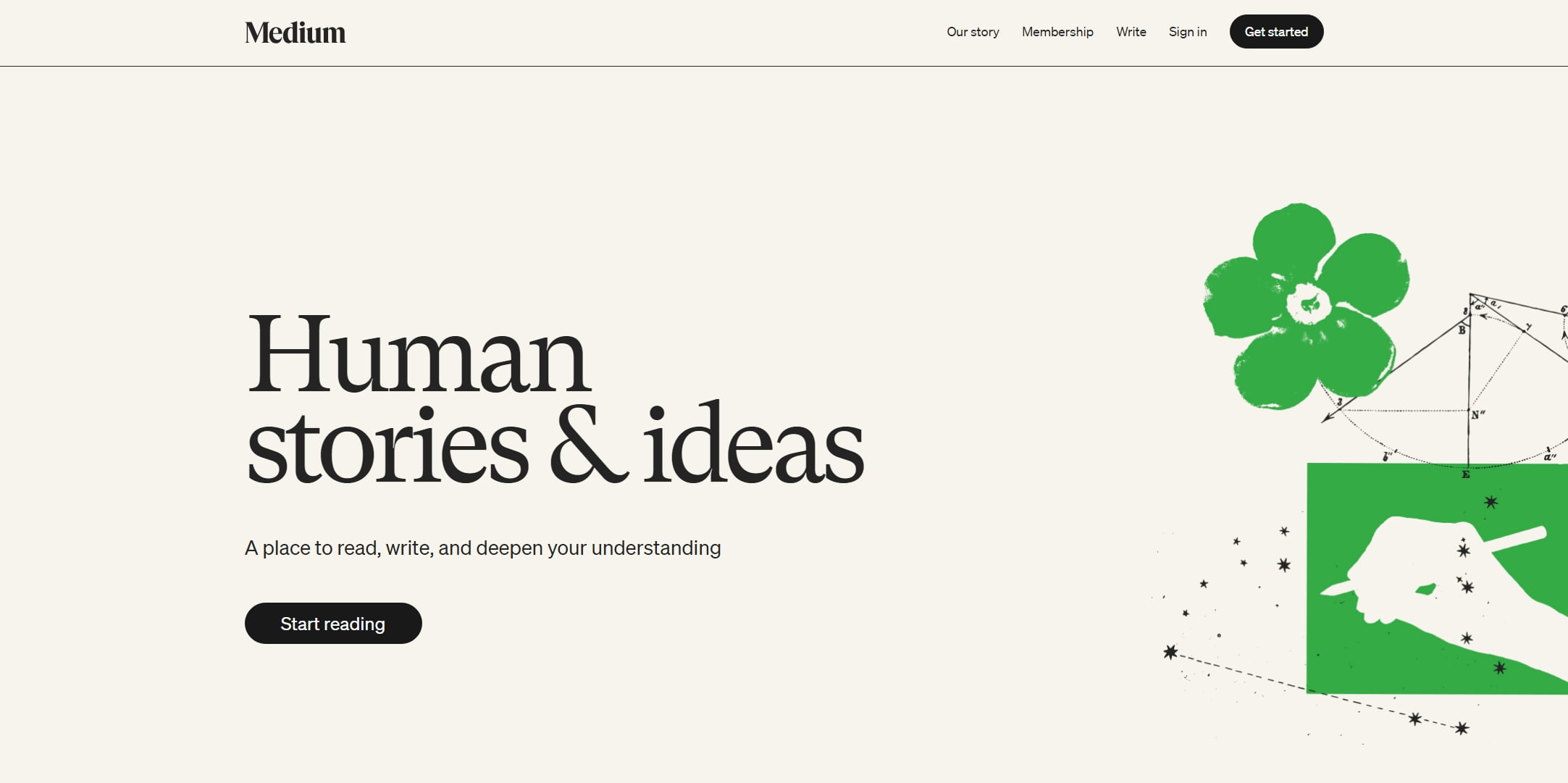
Created by Evan Williams back in August 2012, the guy who also co-founded Blogger and Twitter, Medium.com is an online publishing platform based in the USA. The platform had been initially developed as an alternative to Twitter for publishing longer content (at the time, on Twitter, people could only post 140-character tweets).
For all of those years, Medium.com stayed strong and essentially became one of the world’s most popular publishing platforms. Nowadays, not only are thousands of writers publishing every day on the platform, but many companies have also switched to it to manage their official blogs. It also pays many people for its content thanks to its Partner Program – in which anyone can apply if they meet some light criteria (more about it in a bit).
Medium.com is a great platform for writers and readers alike for many reasons, but especially thanks to its modern and simplified design and interface. Writers have the ability to quickly and easily write and publish posts, track their statistics, and even create or post in other publications. As for the readers, they get a beautiful, clean, and destruction-free place from where they can read unique content, follow their favorite writers, and engage with them by liking their content, commenting, and sharing it across the web.
What is Substack.com?
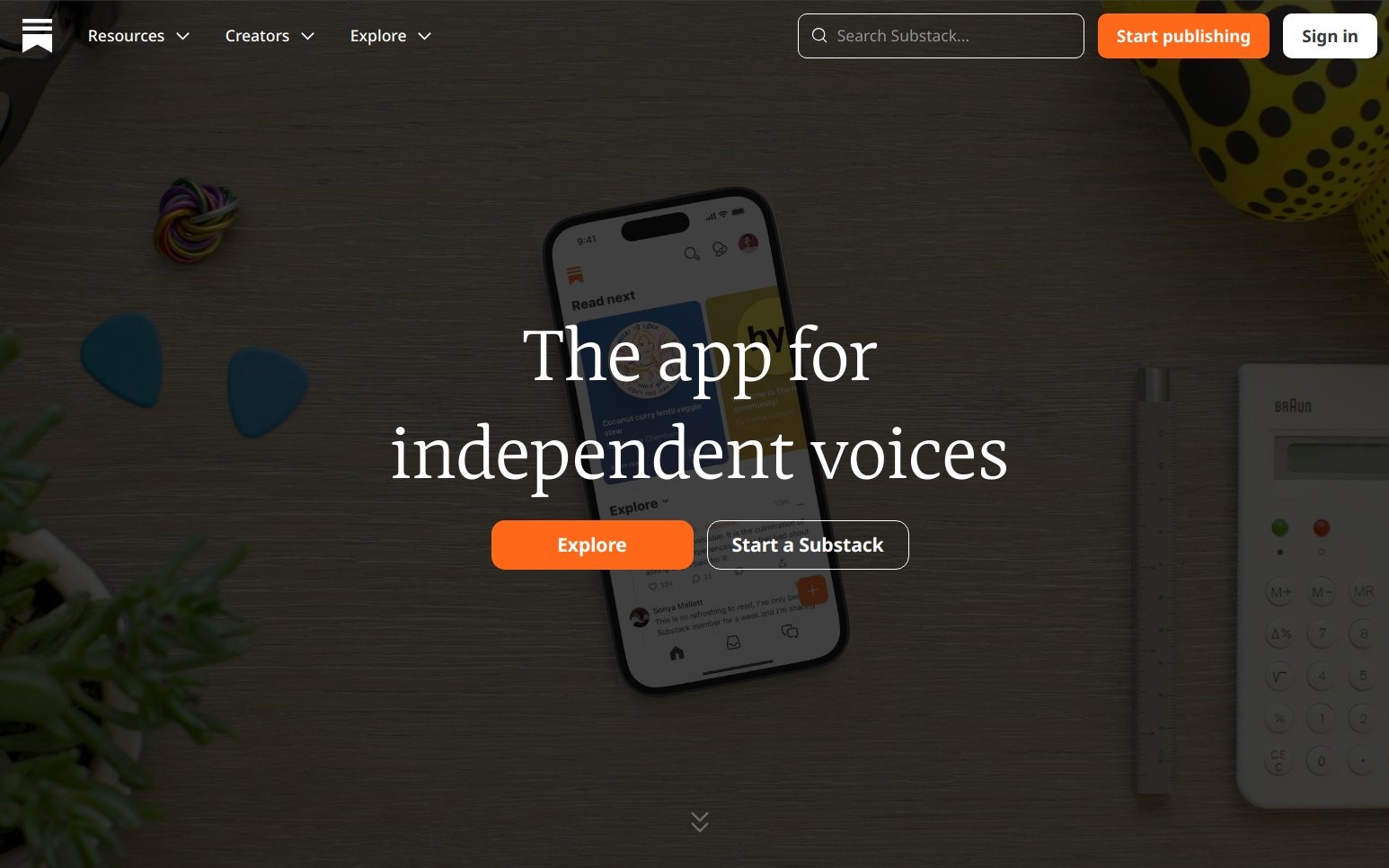
In a world where email marketing is crucial for millions of businesses and independent writers, there was always a little problem: People didn’t have a place to go to and discover a vast list of available newsletters they could subscribe to. Substack somewhat came to fix that problem, and it has been designed to offer even more features and options for independent voices looking to build an audience.
Like Medium.com, Substack.com is also an American company, but it is a newer one. It was first founded in 2017 by Chris Best (co-founder of Kik Messenger), Jairaj Sethi (head of platform and principal developer at Kik Messenger), and Hamish McKenzie (a former tech reporter at PandoDaily). Since then, it has become one of the most popular content publishing platforms in the world, and for all the good reasons.
Apart from some very high-profile writers and journalists who use Substack.com, it’s been a home for thousands of independent voices and a great way to make money along the way. Whether you’re a blogger, podcaster, book author, journalist, vlogger, or someone who wants to share their stories, knowledge, or skills with the rest of the world, Substack.com is arguably one of the best ways to do that.
The platform lets you build your own audience, transform readers into paid subscribers, easily update them with newsletters, keep track of your growth by watching your content’s statistics, and basically turn it into a source of income.
What are the differences between Medium.com and Substack.com?
They may look very similar, but there are some key differences between the two publishing platforms, and that results in having different writers and readers alike. The engagement also differs between these two, mainly due to how they work, the features they provide, and how content is being delivered and shared across them.
How Medium.com works in 2025
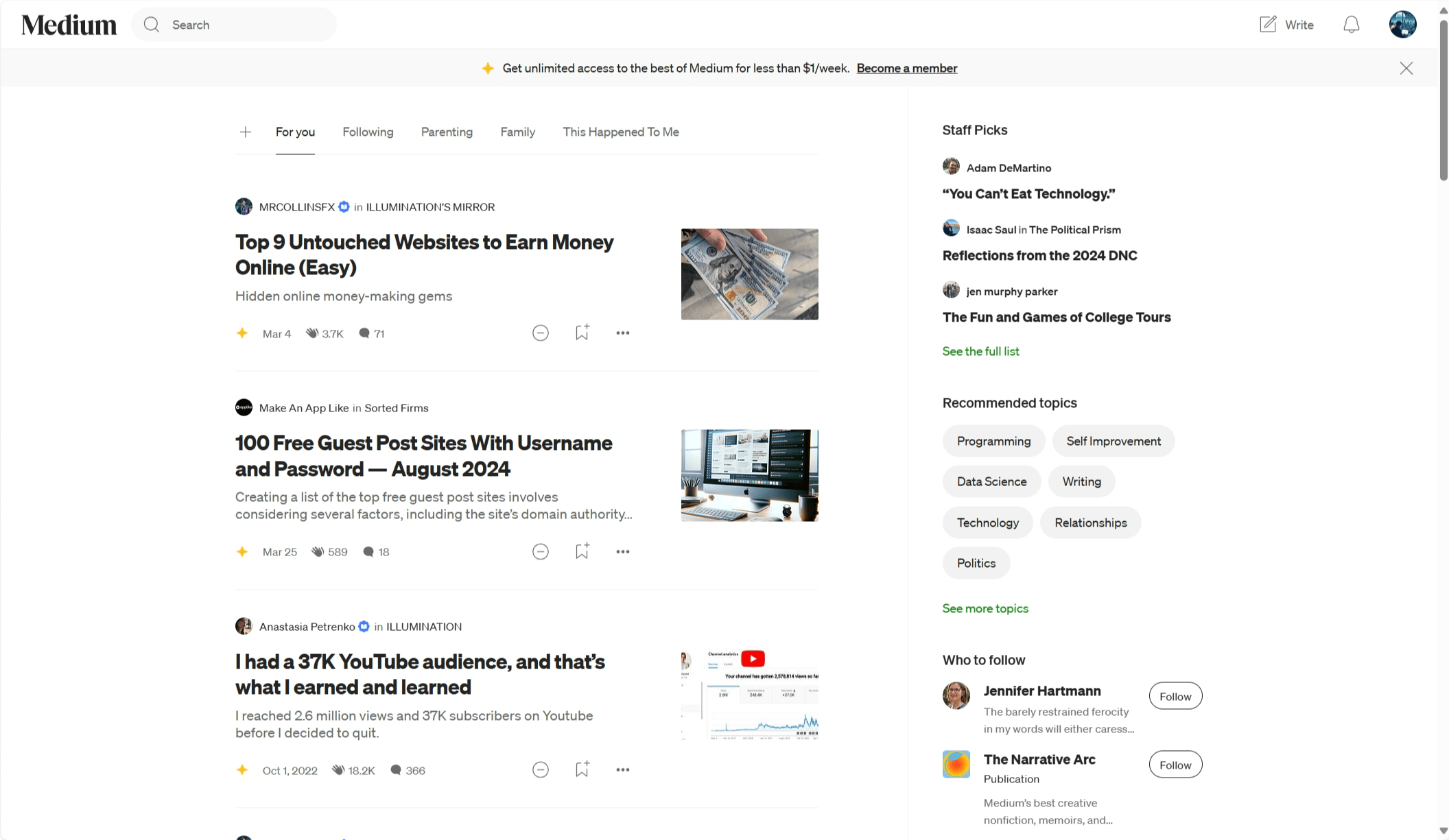
Primarily focused on being a publishing platform, Medium.com is designed for writers who like to share stories and publish long reads, reaching a boarder audience across the whole world. The platform uses a personalized recommendation system, which is not that different from what we are used to seeing on social media platforms, that’s been designed to help readers discover content based on their interests.
To help increase the engagement between readers and writers, Medium.com has provided specific features for its users, including letting readers clap to stories (something like a “like” button), highlights, and responses (comments). People can respond in articles and even highlight a specific part of the story and mention it within an easy-to-use commenting system.
If you’re a reader, Medium.com will suggest new content based on your interests and reading history, which makes it a pretty great way to discover articles that you usually want to read. If you’re a writer, this is a great way to reach people who will actually be interested in reading your articles, rather than random people who just ended up seeing your article.
For writers, Medium.com lets you track your views, readers, claps, and engagement time, and once you meet the light requirements, you’ll be able to monetize your account and start making money (more on that in a bit). Thanks to its algorithm and the vast user base, articles on Medium.com can potentially reach millions of readers and find a place in the most popular recommended lists.
How Substack.com works in 2025
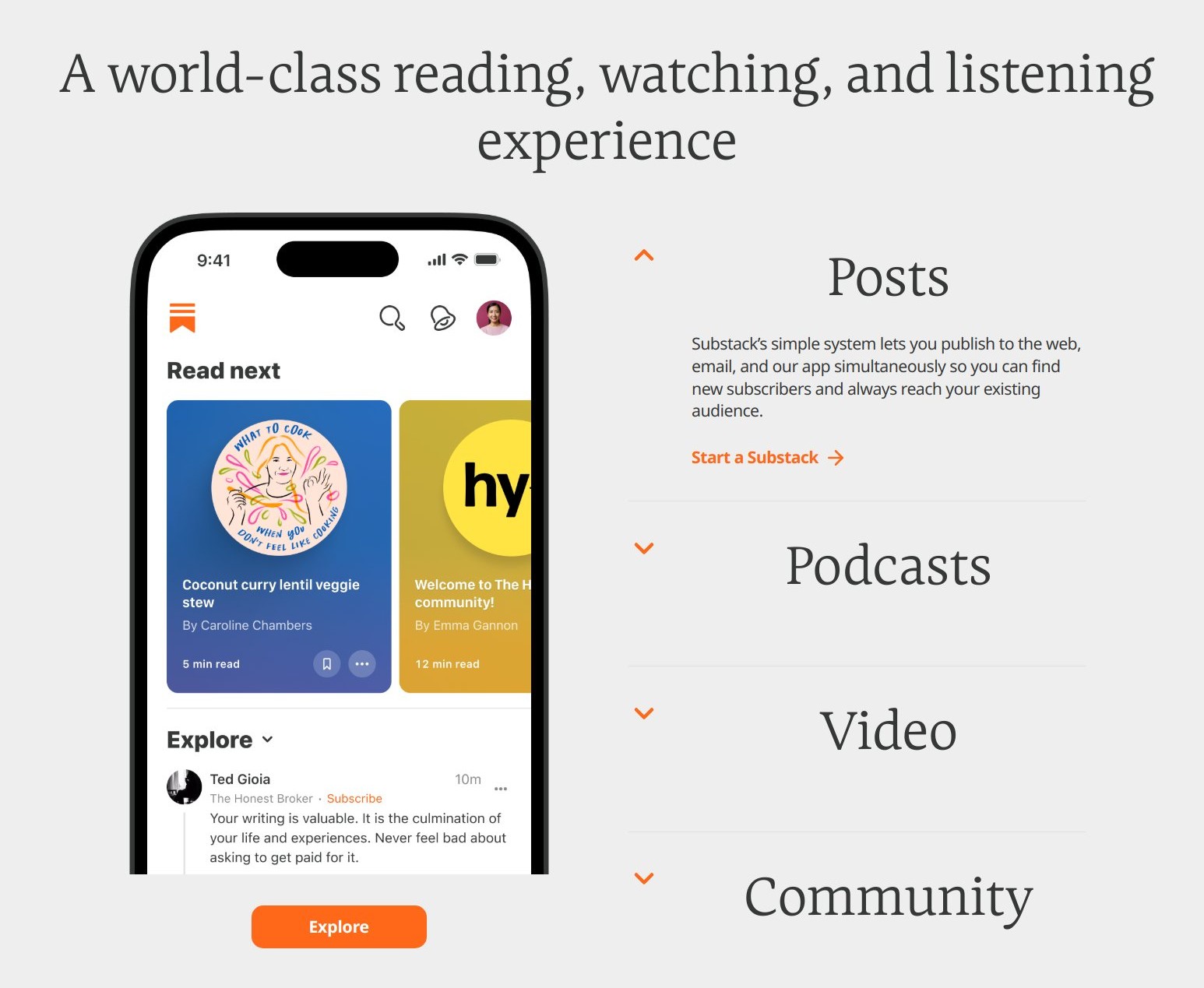
Substack.com is mainly focused on email newsletters, but in a form that looks like and reminds you of traditional blogging. Because of its strategy, Substack.com is a great place for writers who want a more direct approach when building their audience, and with newsletters, engagement is pretty much more personal.
For readers, is a great place to find writers all around the world and subscribe to their content, or even become premium subscribers (meaning that they pay each month to support their favorite writers). For writers, it provides many useful tools for customizing their profiles and publishing content on the platform. It also has its own integrated statistics from which you can keep track of your growth.
Most of the writers on Substack.com are looking at locking their content for paid members only, which is a way to start building their own passive income. Readers can like, comment, and share each article, and from their home page have a social media-like feed from which they can discover more content made by other users.
Unlike Medium, users on Substack can post their own short content – it’s like being on X, Bluesky, or Threads, but this time mostly with posts made by journalists, writers, bloggers, etc. It feels more like a social media platform nowadays rather than a newsletter or publishing platform, and discovering long-read articles is way more difficult than finding short content.
If you like Twitter or Bluesky, then Substack may be a great choice for you. And occasionally, you may actually find some great long-read articles to read – from a reader’s perspective, always.
How do Medium and Substack pay writers?
Let’s get to the chase, shall we? How do people actually make money from those platforms, and can anyone do it? The answer may differ based on various factors, but essentially, any individual can use these two platforms to start making money from their content – and without spending a whole fortune or investing too much time in the learning curve.
Medium’s Partner Program
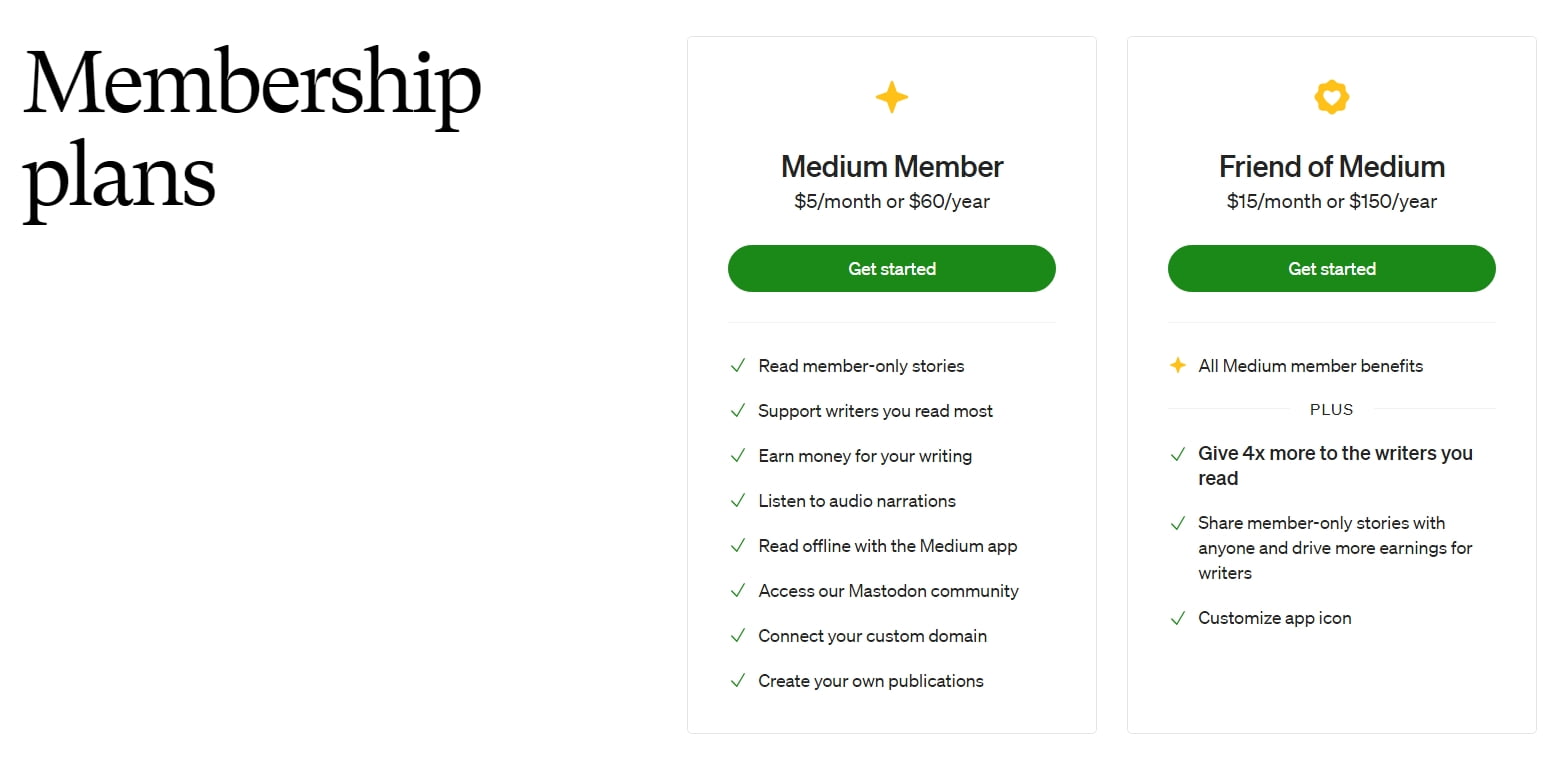
When it comes to getting paid for your content, those two platforms are very different from each other, so you’ll have to choose carefully. Publishers also need to have a Stripe account, as Medium uses the digital web banking service for its payments.
Medium has its own Partner Program, and if you want to sign up and start making money, you’ll have to a), publish at least one article in the past 6 months and b), be a premium member of the platform. That means investing at least $5.00 per month on the platform – with the premise of earning even more along the way.
Let’s say that you start as a premium member right from the very beginning, how will you get paid for publishing your articles? Well, writers on Medium earn money each time a premium member (yes, a premium member only) reads your article for at least 30 seconds. The longer a reader stays in your article and the more they engage with it, the more money you’ll be earning.
Writers can also get engagement points, which are basically the number of interactions that you get, including claps, highlights, and responses. Apart from that, if your story gets boosted by the platform (basically Medium promoting it), it can earn additional points. Last but not least, Medium pays the writers every month.
The good news is that you can start writing completely for free, and although you won’t get paid until you grab a premium plan, you can learn how to use the interface, where all the options, and how well your content fits on the platform.
Substack’s paid subscriptions model
Unlike Medium, Substack is designed to work mostly around memberships, meaning that writers can charge readers for access to their newsletters. As it happens in similar platforms such as Patreon, readers can pay for a monthly or annual fee to unlock the premium content from their favorite writers.
When it comes to the revenue share, writers keep 90% of their subscription revenue, minus, of course, the transaction fees. For example, Stripe will also charge you an additional fee for each payment, so keep that in mind, too.
With that in mind, Substack doesn’t actually pay writers like Medium does, but instead, the platform is giving them a way to build an audience with paid members who basically fund their favorite writers. So yeah, it’s not going to be an overnight success kind of thing, but more or like investing for the future.
Looking at both publishing platforms from a reader’s perspective
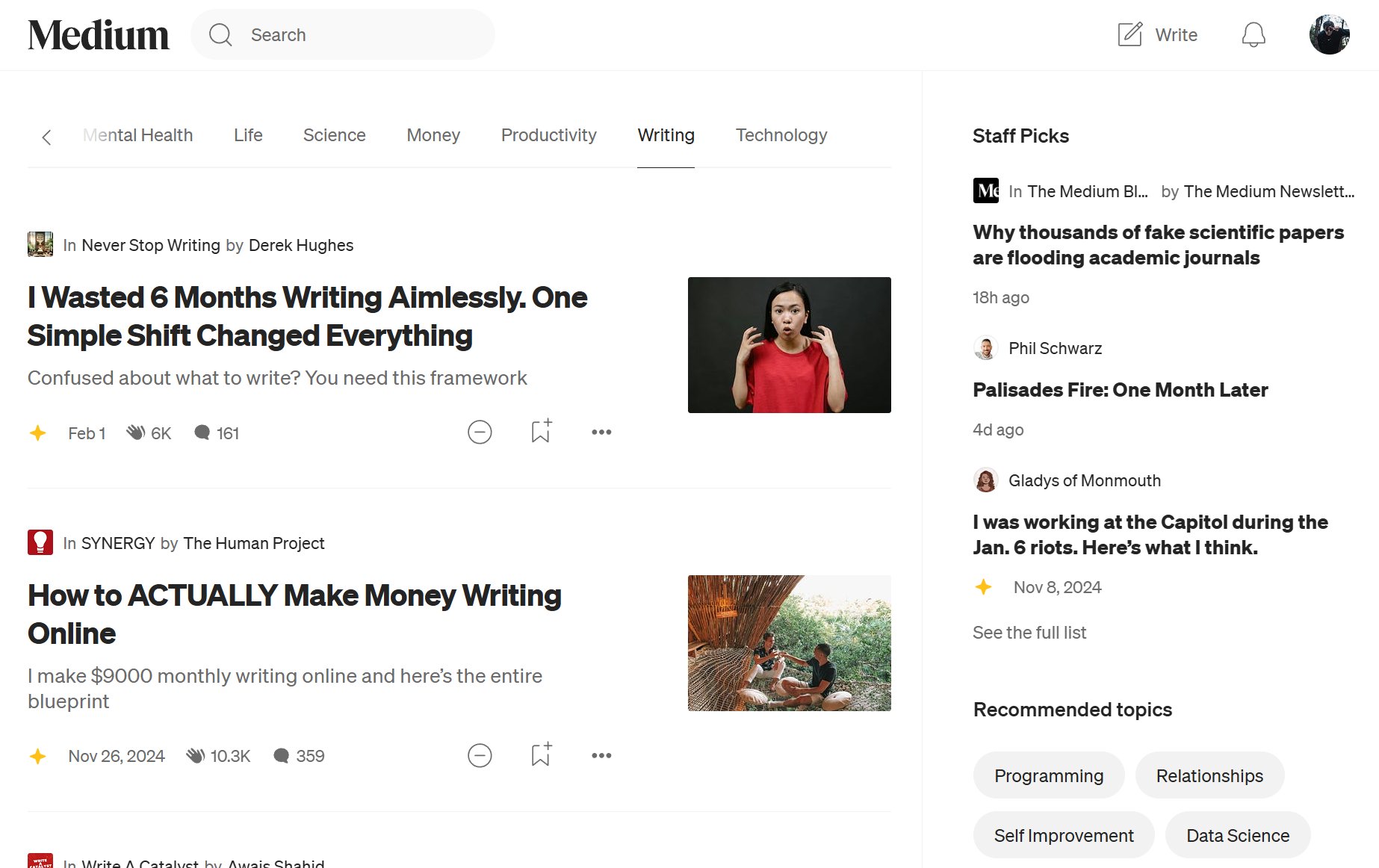
If you’re a writer, then you already know how both of these platforms work and pay writers, but how about a reader’s perspective? How do users actually use Medium and Substack? At first glance, it seems that Medium is the perfect platform to read articles (mostly long-read pieces), discover many official blogs from popular companies, and help your favorite readers by becoming a premium member of the platform.
On Medium, there’s no need to pay for each individual writer that you want to support, meaning that it’s a whole lot cheaper to consume more content while supporting the writers. It’s also easier to discover new content and better when it comes to getting recommendations that are related to your actual interests. The interface is also very clean, minimal, and designed both for writing and reading, which overall makes it a great option for everyone.
Substack, on the other hand, gets more personal, using newsletters as its way of helping writers build a stronger audience. It’s also more “social” than Medium, because it features short content, like any other social media platform does, with users being able to share posts, pictures, videos, etc. Although it has a fairly simple interface, it’s not ideal when it comes to discovering new articles – and especially long reads. It mainly focuses on short content, and most of the time feels like you’re on X.
Unlike Medium’s destructing-free experience and its well-designed interface that quickly lets you discover even more related stories, on Substack is easier to leave the platform without reading anything else. It feels that once you visit a writer’s newsletter page, it’s just that and nothing more to see on the same platform. It’s more for people who prefer social media-like platforms rather than focusing on reading stories.
Should you avoid Medium and Substack and focus on self-hosting options?

Both online publishing platforms have something unique to offer, and they both let you start completely for free – which makes them ideal for many people who don’t want to invest any money whatsoever. But are they actually the ideal options? And if they aren’t, what are the best alternatives that you can choose to go with?
When we say “self-hosted,” we mean those blogs that you can build and customize yourself, with your own server and domain name – a process that has become a matter of minutes. Nowadays? Well, nowadays, you can start your own blog with your own server and domain name for less than $100.00 and within minutes – and that’s without having any previous knowledge or coding skills.
Medium and Substack are the perfect choices for those who’re looking to start completely for free, without having too many customization choices, and choosing specific ways of earning money from their content. In doing so, they also accept to follow both platforms’ terms of use and strictly follow their content guidelines.
If they fail to do that, they’ll see their content removed from their platforms and they’ll get themselves suspended. But what happens if, let’s say, Substack suspends you without reason? It can happen on Medium, too, even if you’re a professional writer meaning no harm.
Those platforms work with specific guidelines and terms, meaning that their automatic systems can suspend you if some words trigger them. And because of the lack of customization options, many don’t feel like they have full control over their blogs/newsletters – and that’s because they don’t.
Now, starting your own self-host has both its upsides and downsides. First, you have full control all over your blog’s design and content. You set your own rules, and you can monetize your blog however you like, including displaying ads, placing affiliate links, publishing advertorials and sponsored content, creating your own memberships, selling your online courses or ebooks, and so much more that you could never do on Medium or Substack.
On the other hand, you’ll have to do most things on your own or hire a web developer. Security? Yep, that’s on you. Features? On you, too. Speed? Well, you have some optimizations to do buddy. And don’t even get me started on search engine optimization (SEO), which is not as simple as “putting keywords here and there”. But you control everything and play by your own rules, and you can essentially build a whole brand around it.
Conclusion: Which platform should you use as a writer?

In summary, Medium pays writers based on engagement metrics and reading time, while Substack allows writers to earn through direct subscriptions and keeps a larger share of the revenue. Both are great options depending on your personal preferences and needs, and you can start completely for free. Thanks to their easy-to-use interfaces, you won’t be losing any time on the learning curve or customizing your profile, and instead, you can quickly start producing high-quality content.
Medium is the oldest platform, and through the years, it has built a vast community filled with creative writers and readers who have become premium members. It has all the tools that you’ll need as a writer and a modern and friendly interface that’s distraction-free and lets you focus on what matters the most: Writing.
On the other hand, Substack is a strong choice. The platform has already built a big and strong community of writers and readers alike, it gives you all the necessary tools to start running your own online newsletter, build your own memberships, and essentially get found. It’s a great way if you’re interested in building a strong audience that pays each month or year to access your locked content without investing any money in doing so.
As a writer, I suppose that one of your biggest challenges is to build your own audience. It’s crucial if you want to promote your work and start making money from your passion. Usually, the more people that follow you, the bigger the chances of increasing your overall earnings, whatever the way you make money from your writing. But it’s important to always remember that relying solely on one company is the biggest mistake you can make.
With that in mind, I’d say build your own blog over which you’d have full control (and it doesn’t need to be anything too complex either), and use Medium and Substack to promote all the stories that don’t quite fit on your blog, but they’re ideal for these platforms and related to your niche. Spend a bit more time writing more content and sharing it to multiple places instead of one, and build your audience on the only place that you trust the more: Your own website.




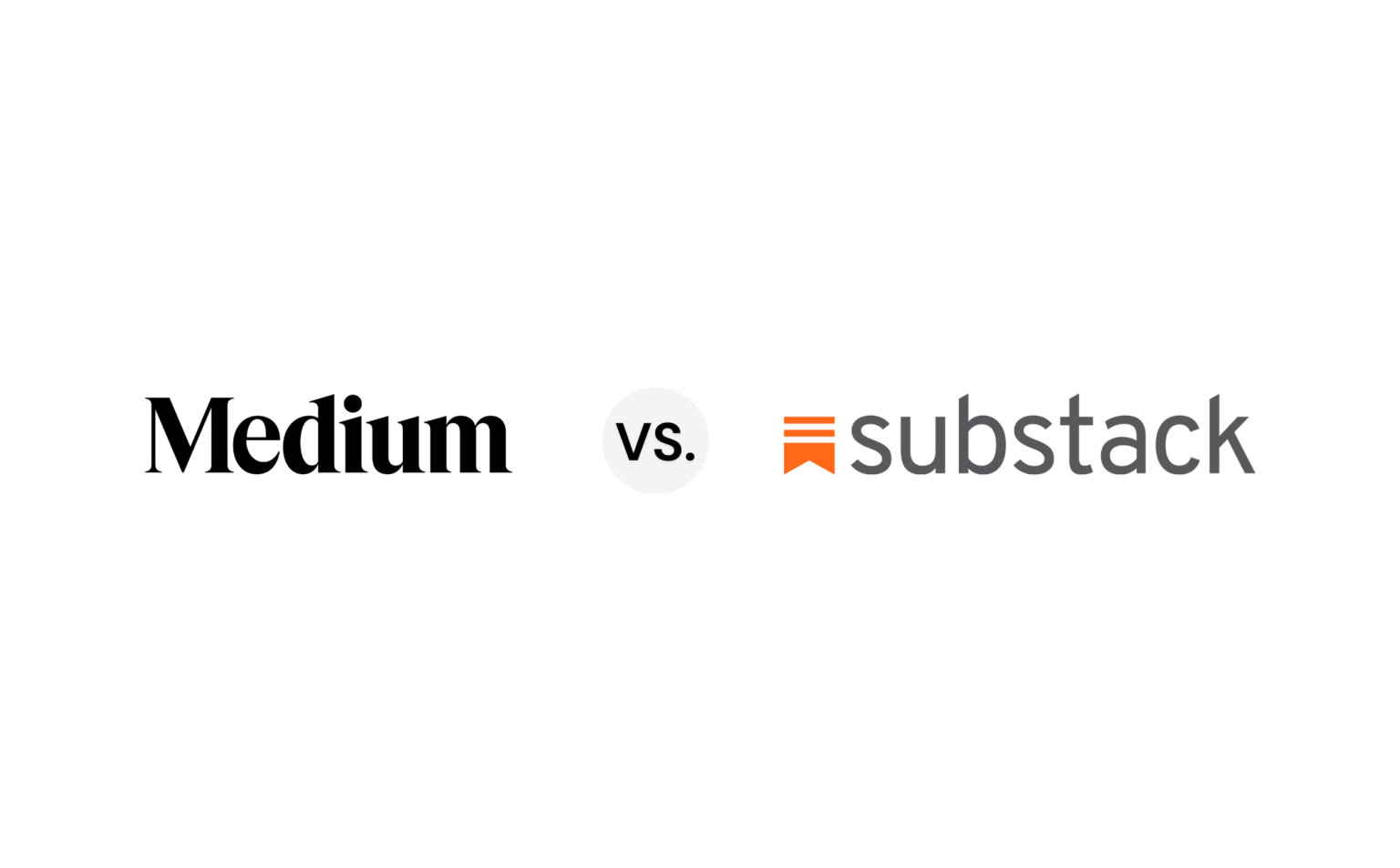





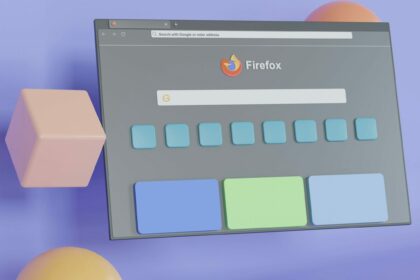




This is a very good tip particularly to those new to the blogosphere.
Short but very precise information… Thanks for sharing this one.
A must read article!